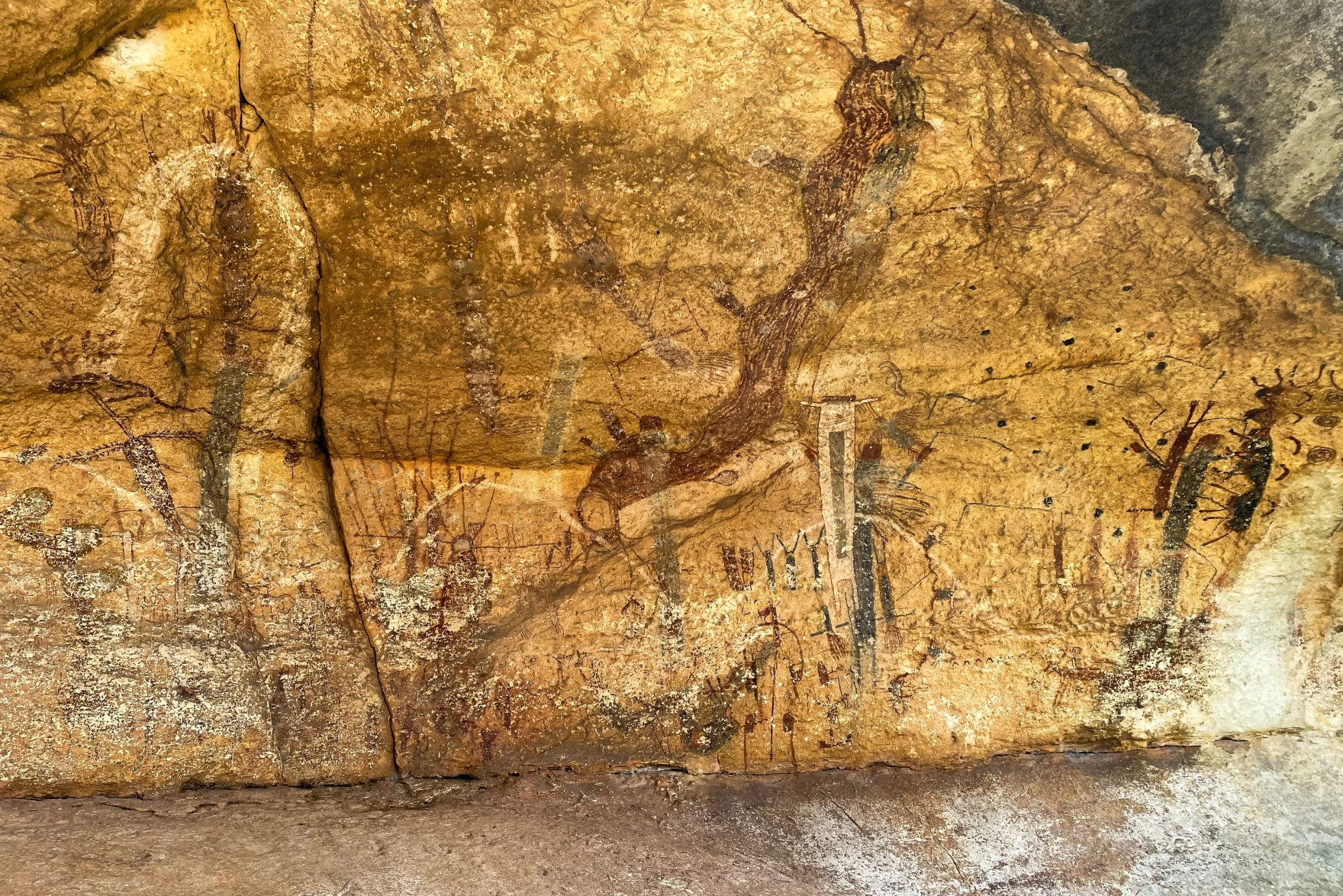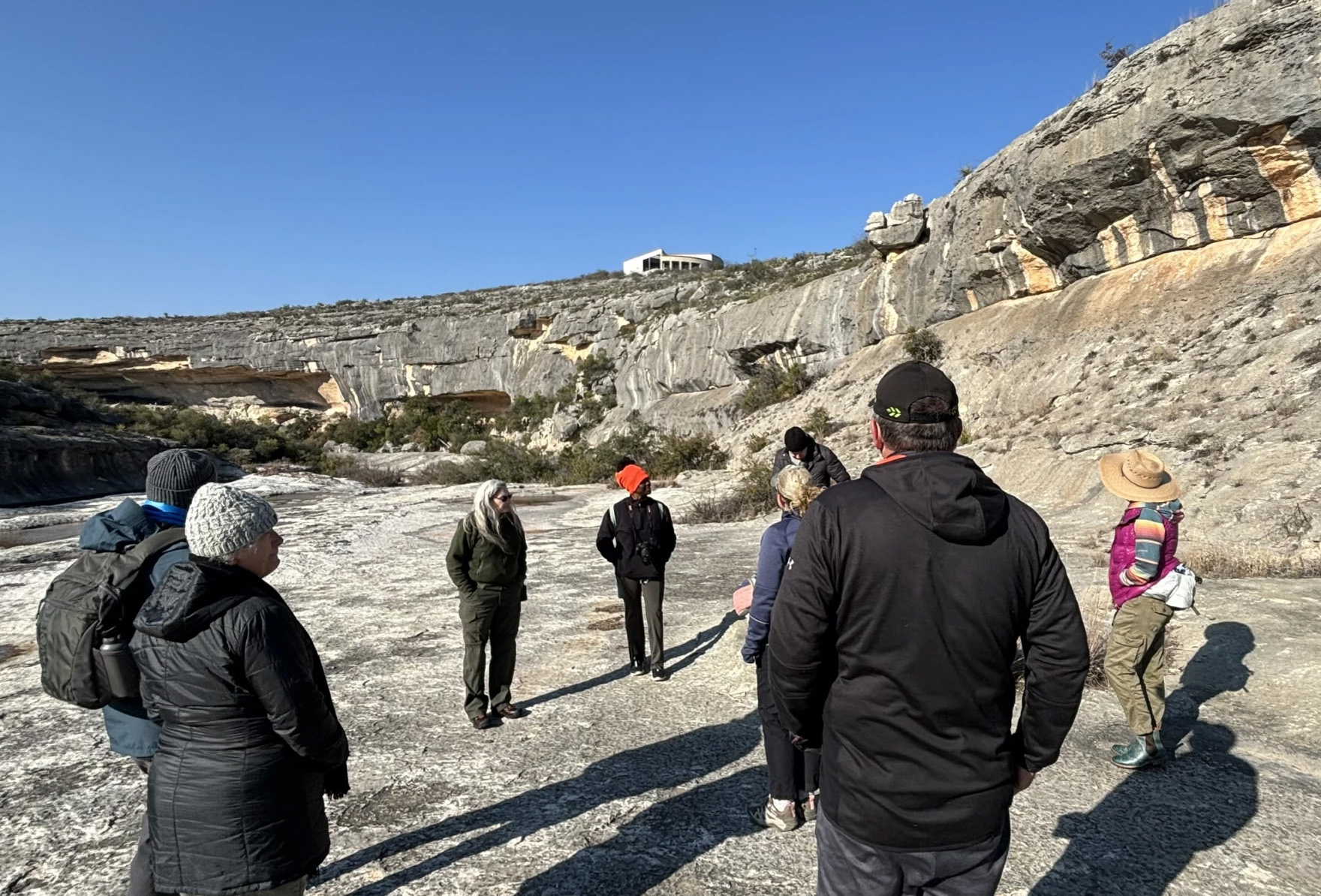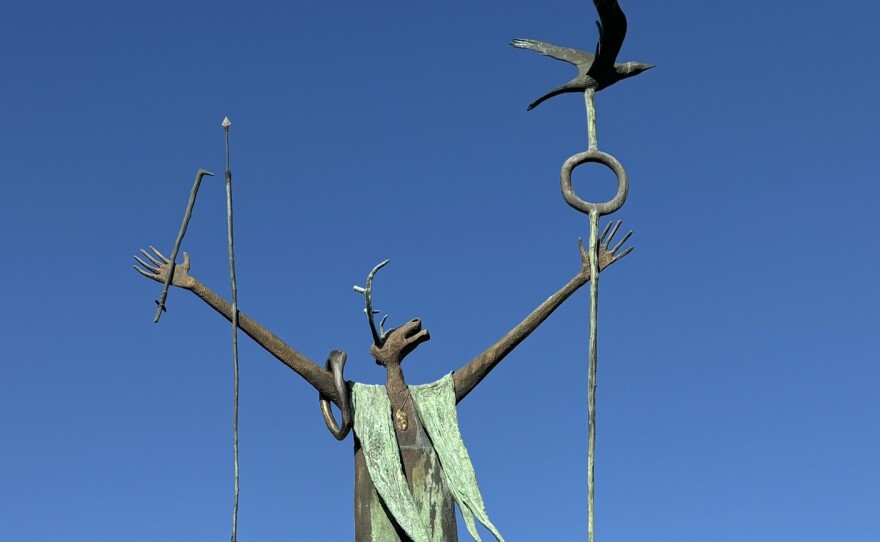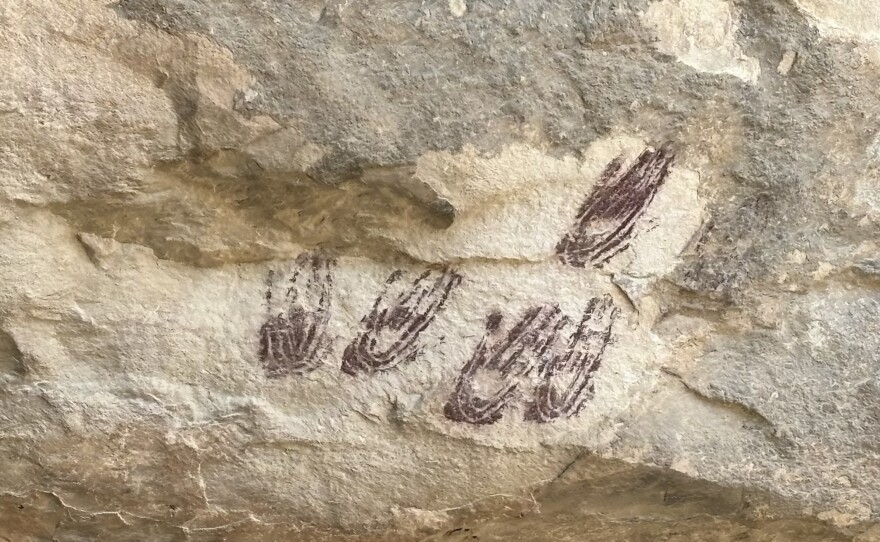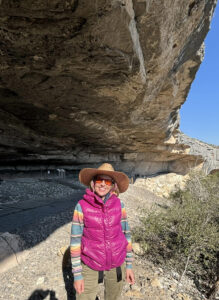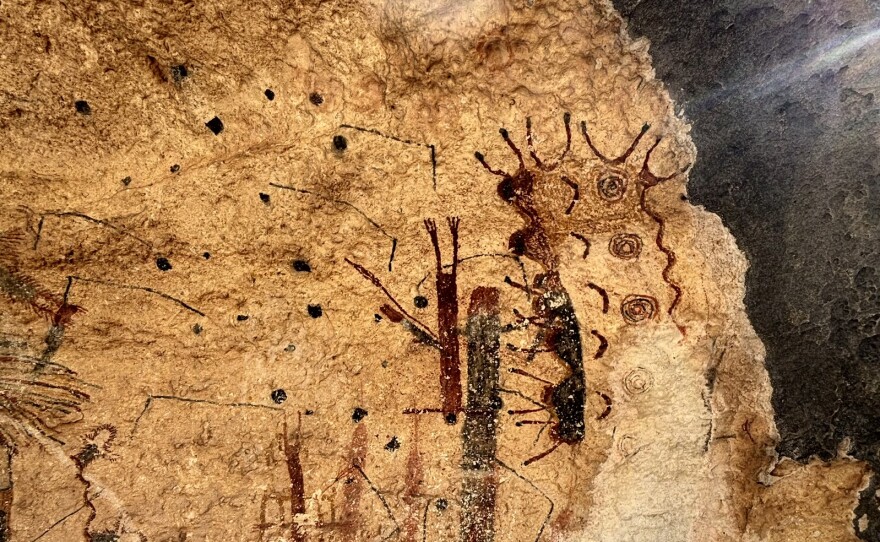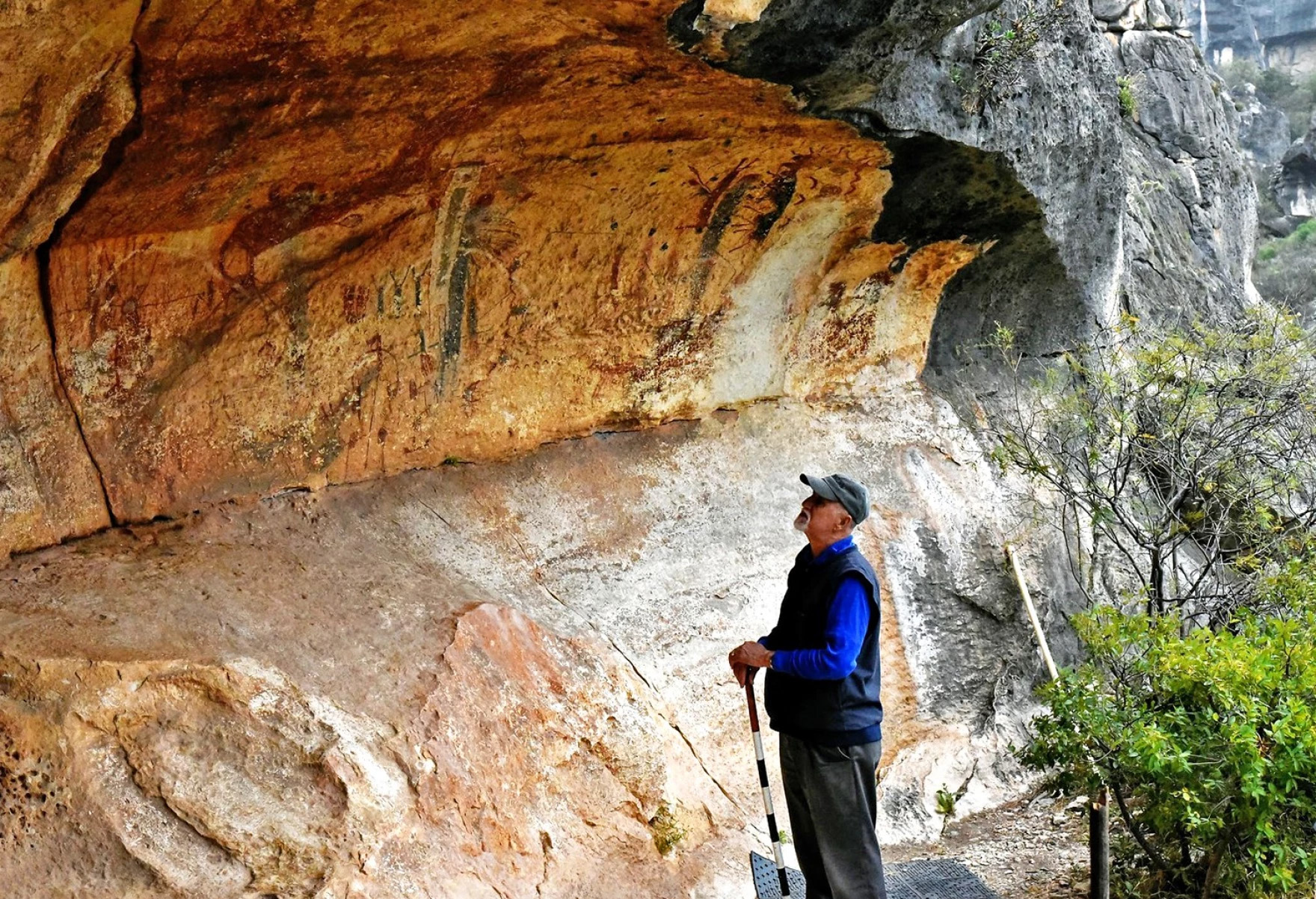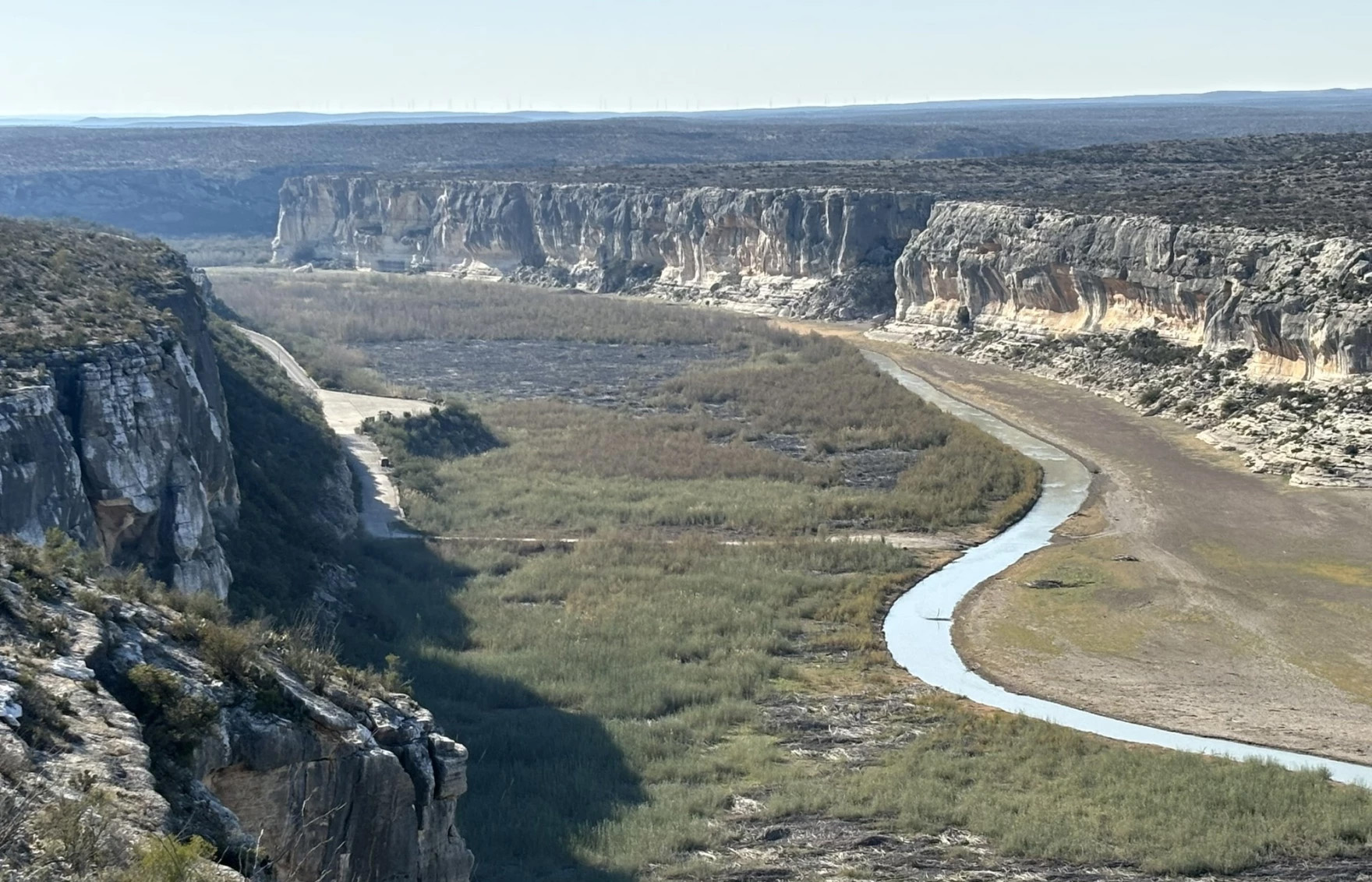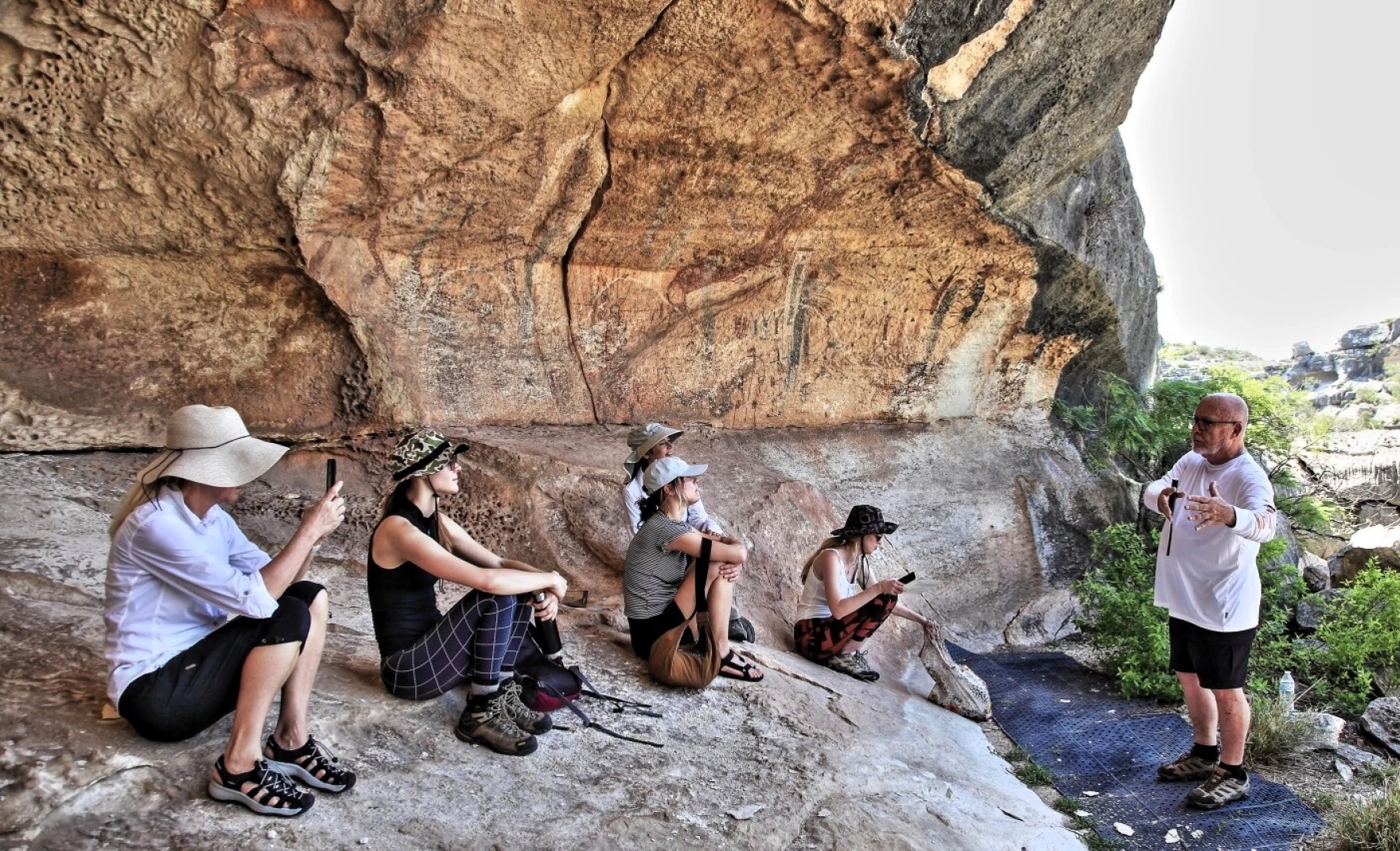From Texas Public Radio:
There are few places that give you the ability to really have interchange with the ancients.
The Pecos Canyonlands northwest of Del Rio offers the chance to come face-to-face with mysterious artworks from ancient humans.
But it’s not easy to get there. The 200+ mile drive from San Antonio to the Seminole Canyon State Park is only about halfway to El Paso. The landscape approaching the Canyonlands north of Amistad Lake, is a deceptive mix. Rolling hills give way to flatlands, which then disappear into craggy canyons.


